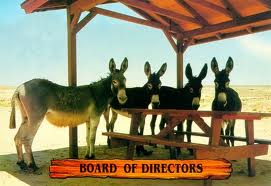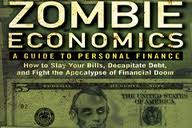 I started this week off by talking about government funding for non-profit organizations and how it might not be all that it appears to be. We transitioned mid-week into a discussion about executive compensation and now we’re ending the week totally focused on non-profit transparency. These topics are all related and go together as well as peanut butter and jelly. However, the issue of non-profit transparency still seems to be a murky subject for many of us including me.
I started this week off by talking about government funding for non-profit organizations and how it might not be all that it appears to be. We transitioned mid-week into a discussion about executive compensation and now we’re ending the week totally focused on non-profit transparency. These topics are all related and go together as well as peanut butter and jelly. However, the issue of non-profit transparency still seems to be a murky subject for many of us including me.
What is transparency? How far should a non-profit organization go with transparency (e.g. should the executive director tatoo their salary on their forehead)? What are the best ways to share a large volume of organizational information if it wanted to be 100% transparent? I don’t know about you, but the more I think about this topic the more questions I seem to end up with.
I recently ran across a great blog post by GuideStar that dates back to November 2006. They asked their readers to define transparency, and I found a number of very interesting ideas. You should click the aforementioned link and read the post. Here is one of my favorite thoughts on this subject from one of their readers:
“. . . everything we do must be clearly understood and open to review and thoughtful discussion by all stakeholders to gain their complete confidence and respect.”
 While getting a clear idea of what we’re talking about is important, it becomes equally important to wrap your arms around how to achieve organizational transparency. I’ve had a number of random thoughts about what I might do differently if I were on the frontline again as an executive director. Here are just a few of those ideas:
While getting a clear idea of what we’re talking about is important, it becomes equally important to wrap your arms around how to achieve organizational transparency. I’ve had a number of random thoughts about what I might do differently if I were on the frontline again as an executive director. Here are just a few of those ideas:
- I would create a “transparency corner” of the agency’s website and post documents such as:
– most recent 990 tax return
– most recent financial audit and management letter
– a list of the agency’s Top 5 highest paid employees with their salaries and value of their
benefits package published
– board roster with contact information for each volunteer and a copy of the agency’s
whistleblower policy
– regularly updated program outcomes data and impact report
– updated financial dashboard that illustrates the current financial health of the organization
– most recent copy of the strategic plan along with a regularly updated scorecard that reports
on progress towards implementation
– if the organization is accredited, then a copy of the documentation from the last accreditation
visit (or if you’re a Boys & Girls Club a copy of the Club’s most recent SOE assessment from the national office)
– a list of government grants, program deliverable associated with those grants, program
outcomes data linked to those deliverables, and a way for the average citizen to contact the governmental agency
administering that grant to report questionable activity - Everyone seems to have a newsletter nowadays with an “Executive Director’s corner. I would focus every one of those “corners” on a different aspect of organizational transparency.
- I would publish an “annual report” every year (even it is wasn’t glossy) and include a wide variety of transparency topics such as a list of people who support your agency; a thumbnail picture of how revenues and expense breakout; a snapshot of who the agency serves, a list of the organization’s biggest accomplishments in the last year; and much more.
- I would produce and mail a quarterly “Community Impact Report” to ALL donors that answers the big picture questions of: “What are you doing with my money? What results is my charitable investment achieving? What have you learned and plan on doing differently?”
I am confident that this list can endlessly go on and on and one. So, I am going to stop here. However, I would encourage you to use the comment box below to answer one or both of these questions: 1) How do you define “transparency”? and 2) What additional transparency idea do you have that should be added to the list above (or what idea from this list should be removed)?
Please take a moment to weigh-in with your thoughts and opinions. It is just 60 seconds of your time and it could make a difference in another readers’ agency. Remember, we can all learn from each other.
Here is to your health!
Erik Anderson
Founder & President, The Healthy Non-Profit LLC
www.thehealthynonprofit.com
erik@thehealthynonprofit.com
http://twitter.com/#!/eanderson847
http://www.facebook.com/eanderson847|
http://www.linkedin.com/in/erikanderson847



















